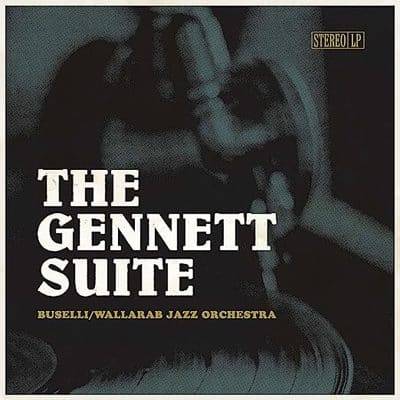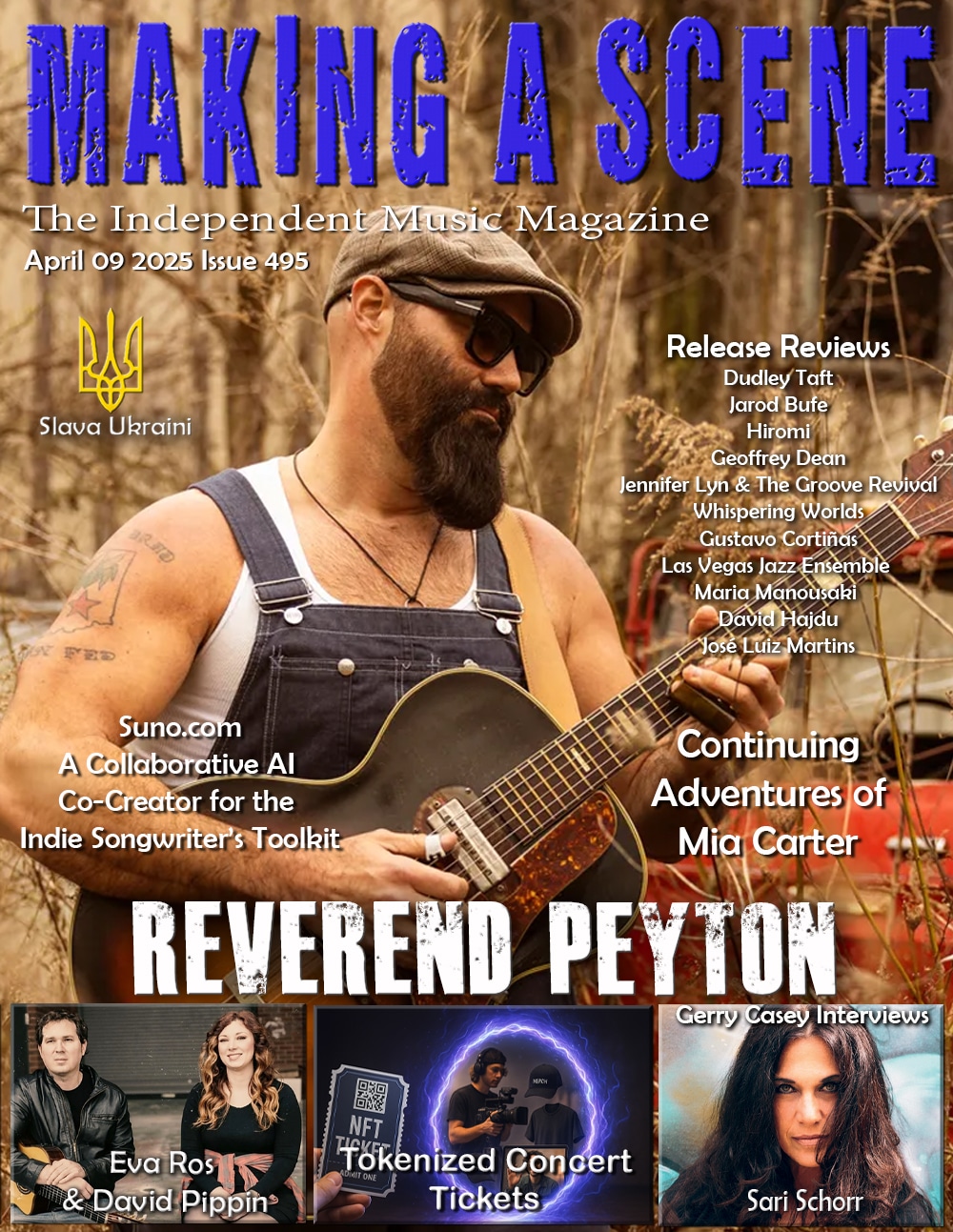Buselli/Wallarab Jazz Orchestra The Gennett Suite
 Buselli/Wallarab Jazz Orchestra
Buselli/Wallarab Jazz Orchestra
The Gennett Suite
Patois
Please do not dust this off as just another big band/ large ensemble recording. You will likely learn something about the history of music recording in America if you invest a few minutes here. This writer was unaware of the importance of Gennett Records, and the first jazz recordings the label spawned a century ago until this project came along. Even many of the musicians in this project were unaware as well. Let’s start with this question – where did Louis Armstrong, Bix Beiderbecke, Hoagy Carmichael, and Jelly Roll Morton first record? That answer lies in the unheralded town of Richmond, Indiana, in a converted piano factory – “When they waxed Jazz in a shack by the track.” It’s long been the goal of composer and Indiana University professor Brent Wallarab to capture this pioneering music through the lens of his jazz orchestra. His partner is trumpeter Mark Buselli. Together, they founded the orchestra in 1994. This double CD, handsomely packaged with a 60-plus-page booklet, The Gennett Suite, is their eighth album and certainly the most important one.
Wallarab contemporizes the music somewhat by adding funkified bass lines, advanced harmonies, and colorful ensemble textures that were not possible in the mostly small combos referenced in the music. He presents four movements across the two CDs. The first movement, Royal Blue, nods to some of the label’s earliest stars, represented initially by “Tin Roof Blues,” recorded in 1923 by the New Orleans Rhythm Kings, whose major soloist was Louis Armstrong. Yet, instead of a trumpet solo, we hear only the train-like sounds in the baritone sax solo of Ned Boyd in Part One and a more modern sounding tenorist Tom Walsh in Part Two. Wallarab sticks with Armstrong by following with “Chimes Blues,” these three comprising 17 minutes, with the six plus minute “Dippermouth Blues” following. The latter two Gennett recordings originated in King Oliver’s Creole Jazz Band starring Armstrong, who had arrived in Chicago in 1922. More soloists emerge on “Chimes Blues,” namely Scott Belck on flugelhorn, Greg Ward on soprano saxophone and Buselli on trumpet while trombonist Andrew Danforth and tenorist Todd Williams step out in the latter. The well-worn cliché says that blues is at the root of all musical forms, and that’s as clear as can be in these renditions that feature the call of response motif throughout, first established by trumpeters Jeff Conrad and Buselli in the last tune.
The second movement, Blues Faux Bix, focuses on Armstrong’s white rival of those times, cornetist Bix Beiderbecke, whose cooler (some may couch it as blander and far less soulful) sound provided a Midwest alternative to the sounds emanating from NOLA. (Beiderbecke was born and raised in Davenport, Iowa.) This movement combines several songs Beiderbecke recorded for Gennett with his band The Wolverines – the early classics “Wolverine Blues” and “The Jazz Me Blues” – and Beiderbecke’s “Davenport Blues,” (but really not a blues piece) recorded under his own name and here starring Wallarab’s partner, Buselli on flugelhorn. Among the others are the building solo from alto saxophonist Amanda Gardier, a bright and bouncy turn from pianist Luke Gillespie, trumpeter Belck’s hot vintage lines, and bassist Jeremy Allen on the interlude.
Howard (“Hoagy”) Carmichael, one of the earliest architects of the Great American Songbook, is the focus of the third movement, Hoagland. Wallarab begins the movement with Carmichael’s most enduring composition, “Star Dust,” one that he long debated about including, due to its countless interpretations. Carmichael first recorded “Star Dust” at Gennett in 1927, inspired by Beiderbecke’s improvisations and gift for melody. Wallarab was only convinced to add the piece after he developed an inventive arrangement, which he calls a fantasia based on the original theme, incorporating elements from European classical composers in subtle ways. The highlight here is alto saxophonist Greg Ward, in, to fast forward a few decades, the role of Johnny Hodges. Ward became part of the faculty at Indiana University’s renowned Jacobs School of Music in 2019 and has played with the orchestra since although we know him best in the small combo context in his own progressive Rogue Parade, and for collaborations with “Beat Scientist” Makaya McCraven. Wallarab comments – “We all know what an amazingly creative small-group improviser he is. But a lead saxophone player in a big band? It’s just among the best I’ve ever heard from anyone. His playing on ‘Star Dust’ is just breathtaking.” The other Carmichael rendering here is “Riverboat Shuffle,” taken in two parts and featuring a cinematic, full-out dramatic sounding score that has trumpeter John Raymond, tenorist Williams, and drummer Sean Dobbin in starring roles.
The fourth and final movement, Mr. Jelly Lord, honors Jelly Roll Morton, the first notable jazz composer, whose 1923 Gennett collaboration with the New Orleans Rhythm Kings helped inaugurate the new studio and its fledgling label. As the saying goes, the first shall be last. Again, we have the obvious choice, “King Porter’s Stomp,” a tune covered, to name a few, by Fletcher Henderson, Gil Evans, the Sun Ra Arkestra, and avant-jazz guitarist Noël Akchoté. Featured soloists are Gillespie, trumpeter Jeff Conrad, bass trombonist Rich Dole, and Ward (on soprano) for this especially bluesy, as opposed to brassy take. The final piece to project is Morton’s “Grandpa’s Spells” highlighted by ever cool tenorist Walsh and fiery trumpeter Raymond. Note the quasi-Latin feel to the piece, a hallmark of Morton, but one that most renditions overlook.
Wallarab poured practically five years into developing the music for the project but got able assistance in the historical narrative from acclaimed jazz historian John Hasse, Curator Emeritus at the Smithsonian Institution, and also David Brent Johnson, author and nationally syndicated radio host at Bloomington’s WFIU-FM, to analyze Wallarab’s use of the source material for the work. t. Delve in; an informative and enjoyable history lesson awaits.
- Jim Hynes
Buy Us a Cup of Coffee!
Join the movement in supporting Making a Scene, the premier independent resource for both emerging musicians and the dedicated fans who champion them.
We showcase this vibrant community that celebrates the raw talent and creative spirit driving the music industry forward. From insightful articles and in-depth interviews to exclusive content and insider tips, Making a Scene empowers artists to thrive and fans to discover their next favorite sound.
Together, let’s amplify the voices of independent musicians and forge unforgettable connections through the power of music
Make a one-time donation
Make a monthly donation
Make a yearly donation
Buy us a cup of Coffee!
Or enter a custom amount
Your contribution is appreciated.
Your contribution is appreciated.
Your contribution is appreciated.
DonateDonate monthlyDonate yearlyYou can donate directly through Paypal!
Subscribe to Our Newsletter
Discover more from Making A Scene!
Subscribe to get the latest posts sent to your email.














































